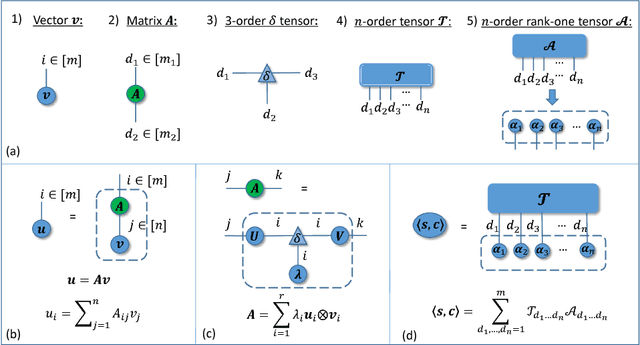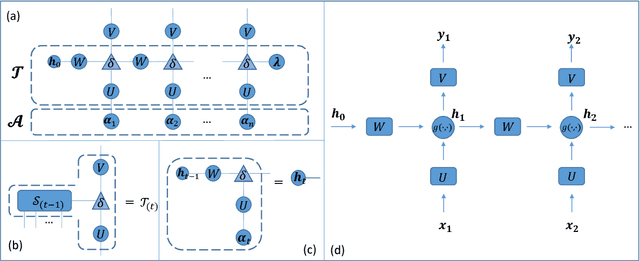Zhan Su
ShizhenGPT: Towards Multimodal LLMs for Traditional Chinese Medicine
Aug 20, 2025Abstract:Despite the success of large language models (LLMs) in various domains, their potential in Traditional Chinese Medicine (TCM) remains largely underexplored due to two critical barriers: (1) the scarcity of high-quality TCM data and (2) the inherently multimodal nature of TCM diagnostics, which involve looking, listening, smelling, and pulse-taking. These sensory-rich modalities are beyond the scope of conventional LLMs. To address these challenges, we present ShizhenGPT, the first multimodal LLM tailored for TCM. To overcome data scarcity, we curate the largest TCM dataset to date, comprising 100GB+ of text and 200GB+ of multimodal data, including 1.2M images, 200 hours of audio, and physiological signals. ShizhenGPT is pretrained and instruction-tuned to achieve deep TCM knowledge and multimodal reasoning. For evaluation, we collect recent national TCM qualification exams and build a visual benchmark for Medicinal Recognition and Visual Diagnosis. Experiments demonstrate that ShizhenGPT outperforms comparable-scale LLMs and competes with larger proprietary models. Moreover, it leads in TCM visual understanding among existing multimodal LLMs and demonstrates unified perception across modalities like sound, pulse, smell, and vision, paving the way toward holistic multimodal perception and diagnosis in TCM. Datasets, models, and code are publicly available. We hope this work will inspire further exploration in this field.
Adaptive Personalized Conversational Information Retrieval
Aug 12, 2025Abstract:Personalized conversational information retrieval (CIR) systems aim to satisfy users' complex information needs through multi-turn interactions by considering user profiles. However, not all search queries require personalization. The challenge lies in appropriately incorporating personalization elements into search when needed. Most existing studies implicitly incorporate users' personal information and conversational context using large language models without distinguishing the specific requirements for each query turn. Such a ``one-size-fits-all'' personalization strategy might lead to sub-optimal results. In this paper, we propose an adaptive personalization method, in which we first identify the required personalization level for a query and integrate personalized queries with other query reformulations to produce various enhanced queries. Then, we design a personalization-aware ranking fusion approach to assign fusion weights dynamically to different reformulated queries, depending on the required personalization level. The proposed adaptive personalized conversational information retrieval framework APCIR is evaluated on two TREC iKAT datasets. The results confirm the effectiveness of adaptive personalization of APCIR by outperforming state-of-the-art methods.
Tensorized Clustered LoRA Merging for Multi-Task Interference
Aug 06, 2025Abstract:Despite the success of the monolithic dense paradigm of large language models (LLMs), the LoRA adapters offer an efficient solution by fine-tuning small task-specific modules and merging them with the base model. However, in multi-task settings, merging LoRA adapters trained on heterogeneous sources frequently causes \textit{task interference}, degrading downstream performance. To address this, we propose a tensorized clustered LoRA (TC-LoRA) library targeting to address the task interference at the \textit{text-level} and \textit{parameter-level}. At the \textit{text-level}, we cluster the training samples in the embedding space to capture input-format similarities, then train a specialized LoRA adapter for each cluster. At the \textit{parameter-level}, we introduce a joint Canonical Polyadic (CP) decomposition that disentangles task-specific and shared factors across LoRA adapters. This joint factorization preserves essential knowledge while reducing cross-task interference. Extensive experiments on out-of-domain zero-shot and skill-composition tasks-including reasoning, question answering, and coding. Compared to strong SVD-based baselines, TC-LoRA achieves +1.4\% accuracy on Phi-3 and +2.3\% on Mistral-7B (+2.3\%), demonstrating the effectiveness of TC-LoRA in LLM adaptation.
ConvMix: A Mixed-Criteria Data Augmentation Framework for Conversational Dense Retrieval
Aug 06, 2025Abstract:Conversational search aims to satisfy users' complex information needs via multiple-turn interactions. The key challenge lies in revealing real users' search intent from the context-dependent queries. Previous studies achieve conversational search by fine-tuning a conversational dense retriever with relevance judgments between pairs of context-dependent queries and documents. However, this training paradigm encounters data scarcity issues. To this end, we propose ConvMix, a mixed-criteria framework to augment conversational dense retrieval, which covers more aspects than existing data augmentation frameworks. We design a two-sided relevance judgment augmentation schema in a scalable manner via the aid of large language models. Besides, we integrate the framework with quality control mechanisms to obtain semantically diverse samples and near-distribution supervisions to combine various annotated data. Experimental results on five widely used benchmarks show that the conversational dense retriever trained by our ConvMix framework outperforms previous baseline methods, which demonstrates our superior effectiveness.
Aligning Query Representation with Rewritten Query and Relevance Judgments in Conversational Search
Jul 29, 2024Abstract:Conversational search supports multi-turn user-system interactions to solve complex information needs. Different from the traditional single-turn ad-hoc search, conversational search encounters a more challenging problem of context-dependent query understanding with the lengthy and long-tail conversational history context. While conversational query rewriting methods leverage explicit rewritten queries to train a rewriting model to transform the context-dependent query into a stand-stone search query, this is usually done without considering the quality of search results. Conversational dense retrieval methods use fine-tuning to improve a pre-trained ad-hoc query encoder, but they are limited by the conversational search data available for training. In this paper, we leverage both rewritten queries and relevance judgments in the conversational search data to train a better query representation model. The key idea is to align the query representation with those of rewritten queries and relevant documents. The proposed model -- Query Representation Alignment Conversational Dense Retriever, QRACDR, is tested on eight datasets, including various settings in conversational search and ad-hoc search. The results demonstrate the strong performance of QRACDR compared with state-of-the-art methods, and confirm the effectiveness of representation alignment.
Mixture of Experts Using Tensor Products
May 26, 2024



Abstract:In multi-task learning, the conventional approach involves training a model on multiple tasks simultaneously. However, the training signals from different tasks can interfere with one another, potentially leading to \textit{negative transfer}. To mitigate this, we investigate if modular language models can facilitate positive transfer and systematic generalization. Specifically, we propose a novel modular language model (\texttt{TensorPoly}), that balances parameter efficiency with nuanced routing methods. For \textit{modules}, we reparameterize Low-Rank Adaptation (\texttt{LoRA}) by employing an entangled tensor through the use of tensor product operations and name the resulting approach \texttt{TLoRA}. For \textit{routing function}, we tailor two innovative routing functions according to the granularity: \texttt{TensorPoly-I} which directs to each rank within the entangled tensor while \texttt{TensorPoly-II} offers a finer-grained routing approach targeting each order of the entangled tensor. The experimental results from the multi-task T0-benchmark demonstrate that: 1) all modular LMs surpass the corresponding dense approaches, highlighting the potential of modular language models to mitigate negative inference in multi-task learning and deliver superior outcomes. 2) \texttt{TensorPoly-I} achieves higher parameter efficiency in adaptation and outperforms other modular LMs, which shows the potential of our approach in multi-task transfer learning.
Towards Modular LLMs by Building and Reusing a Library of LoRAs
May 18, 2024Abstract:The growing number of parameter-efficient adaptations of a base large language model (LLM) calls for studying whether we can reuse such trained adapters to improve performance for new tasks. We study how to best build a library of adapters given multi-task data and devise techniques for both zero-shot and supervised task generalization through routing in such library. We benchmark existing approaches to build this library and introduce model-based clustering, MBC, a method that groups tasks based on the similarity of their adapter parameters, indirectly optimizing for transfer across the multi-task dataset. To re-use the library, we present a novel zero-shot routing mechanism, Arrow, which enables dynamic selection of the most relevant adapters for new inputs without the need for retraining. We experiment with several LLMs, such as Phi-2 and Mistral, on a wide array of held-out tasks, verifying that MBC-based adapters and Arrow routing lead to superior generalization to new tasks. We make steps towards creating modular, adaptable LLMs that can match or outperform traditional joint training.
Language Modeling Using Tensor Trains
May 07, 2024



Abstract:We propose a novel tensor network language model based on the simplest tensor network (i.e., tensor trains), called `Tensor Train Language Model' (TTLM). TTLM represents sentences in an exponential space constructed by the tensor product of words, but computing the probabilities of sentences in a low-dimensional fashion. We demonstrate that the architectures of Second-order RNNs, Recurrent Arithmetic Circuits (RACs), and Multiplicative Integration RNNs are, essentially, special cases of TTLM. Experimental evaluations on real language modeling tasks show that the proposed variants of TTLM (i.e., TTLM-Large and TTLM-Tiny) outperform the vanilla Recurrent Neural Networks (RNNs) with low-scale of hidden units. (The code is available at https://github.com/shuishen112/tensortrainlm.)
History-Aware Conversational Dense Retrieval
Jan 30, 2024



Abstract:Conversational search facilitates complex information retrieval by enabling multi-turn interactions between users and the system. Supporting such interactions requires a comprehensive understanding of the conversational inputs to formulate a good search query based on historical information. In particular, the search query should include the relevant information from the previous conversation turns. However, current approaches for conversational dense retrieval primarily rely on fine-tuning a pre-trained ad-hoc retriever using the whole conversational search session, which can be lengthy and noisy. Moreover, existing approaches are limited by the amount of manual supervision signals in the existing datasets. To address the aforementioned issues, we propose a History-Aware Conversational Dense Retrieval (HAConvDR) system, which incorporates two ideas: context-denoised query reformulation and automatic mining of supervision signals based on the actual impact of historical turns. Experiments on two public conversational search datasets demonstrate the improved history modeling capability of HAConvDR, in particular for long conversations with topic shifts.
A Generalized Language Model in Tensor Space
Jan 31, 2019



Abstract:In the literature, tensors have been effectively used for capturing the context information in language models. However, the existing methods usually adopt relatively-low order tensors, which have limited expressive power in modeling language. Developing a higher-order tensor representation is challenging, in terms of deriving an effective solution and showing its generality. In this paper, we propose a language model named Tensor Space Language Model (TSLM), by utilizing tensor networks and tensor decomposition. In TSLM, we build a high-dimensional semantic space constructed by the tensor product of word vectors. Theoretically, we prove that such tensor representation is a generalization of the n-gram language model. We further show that this high-order tensor representation can be decomposed to a recursive calculation of conditional probability for language modeling. The experimental results on Penn Tree Bank (PTB) dataset and WikiText benchmark demonstrate the effectiveness of TSLM.
 Add to Chrome
Add to Chrome Add to Firefox
Add to Firefox Add to Edge
Add to Edge